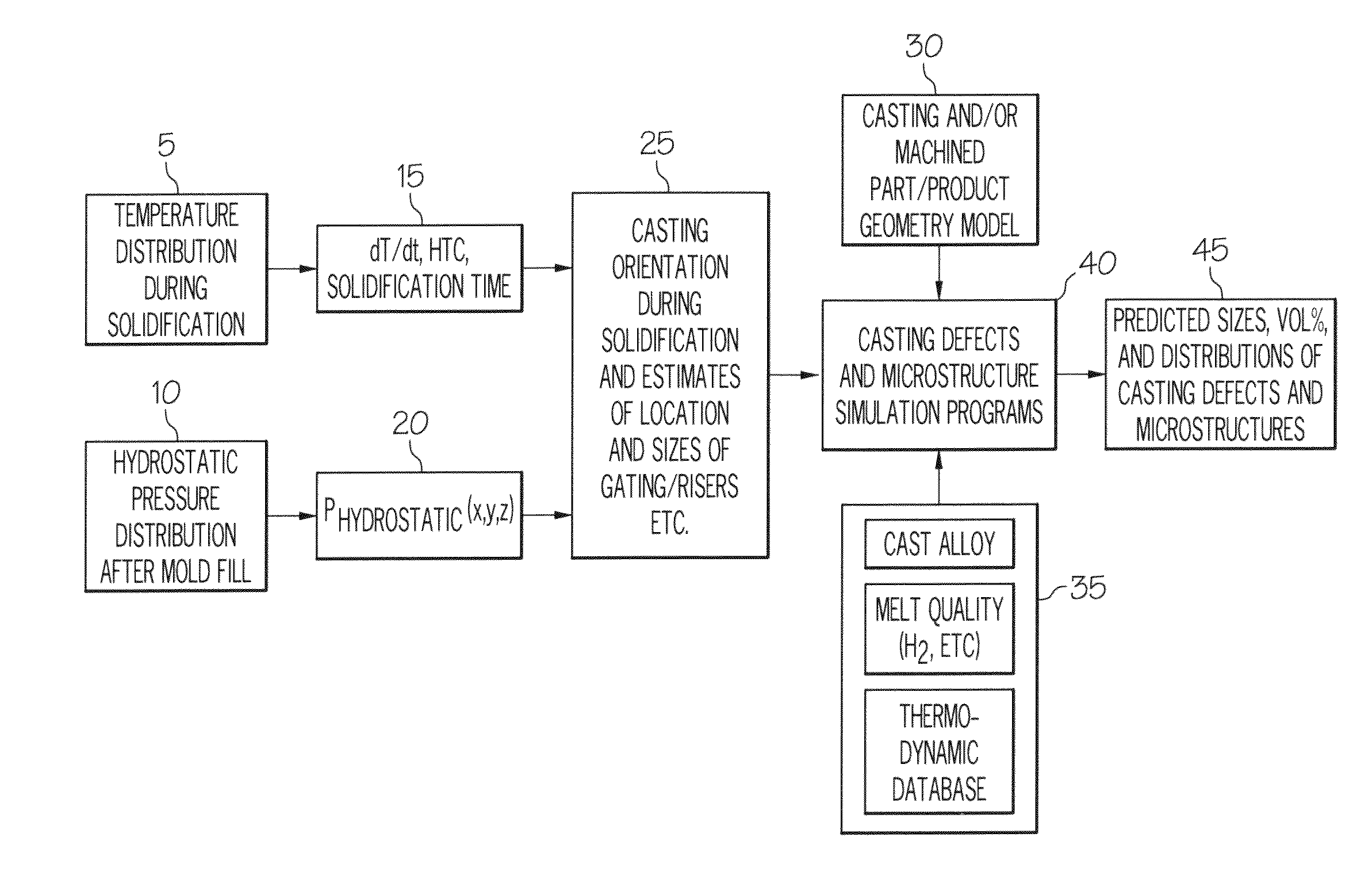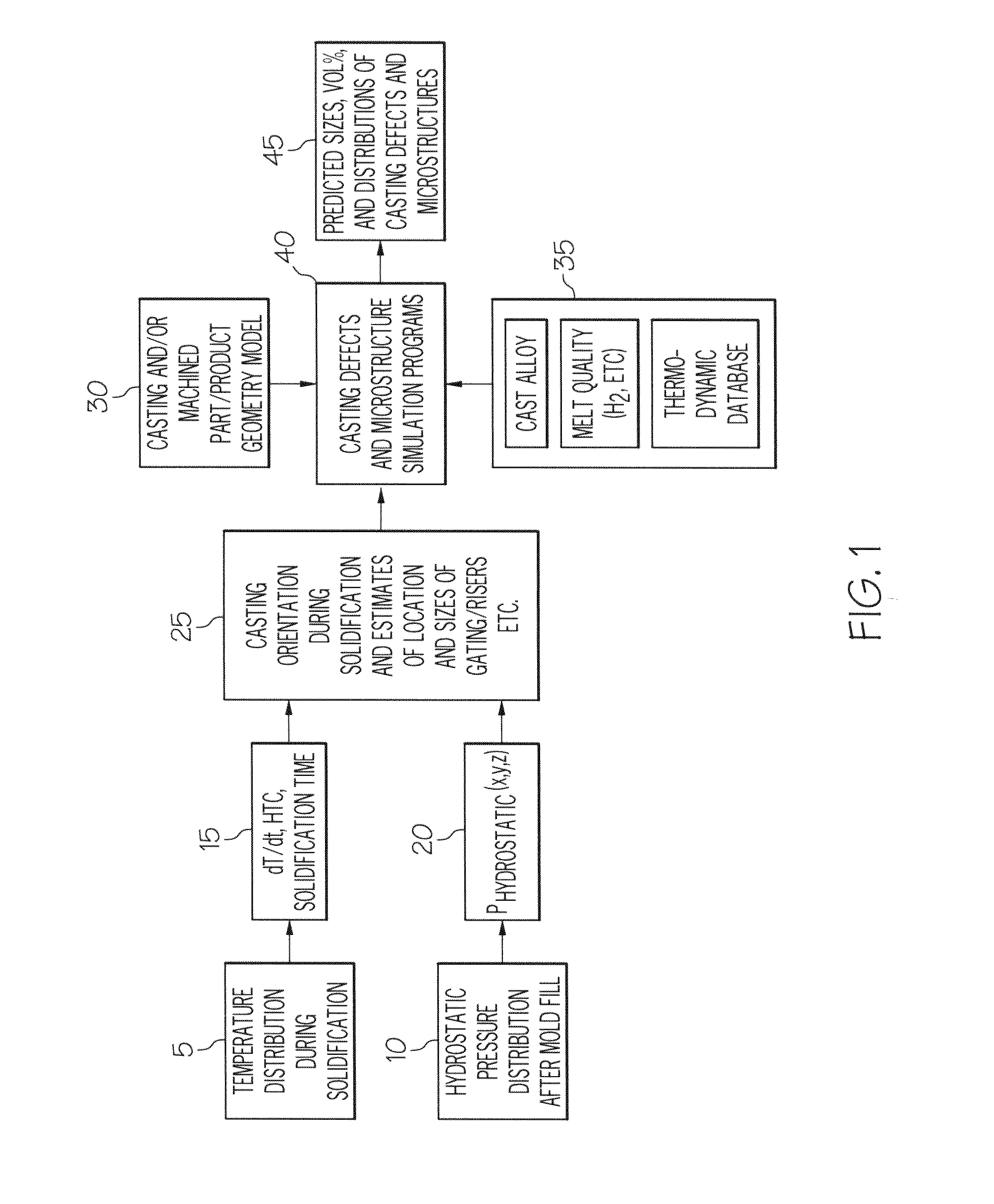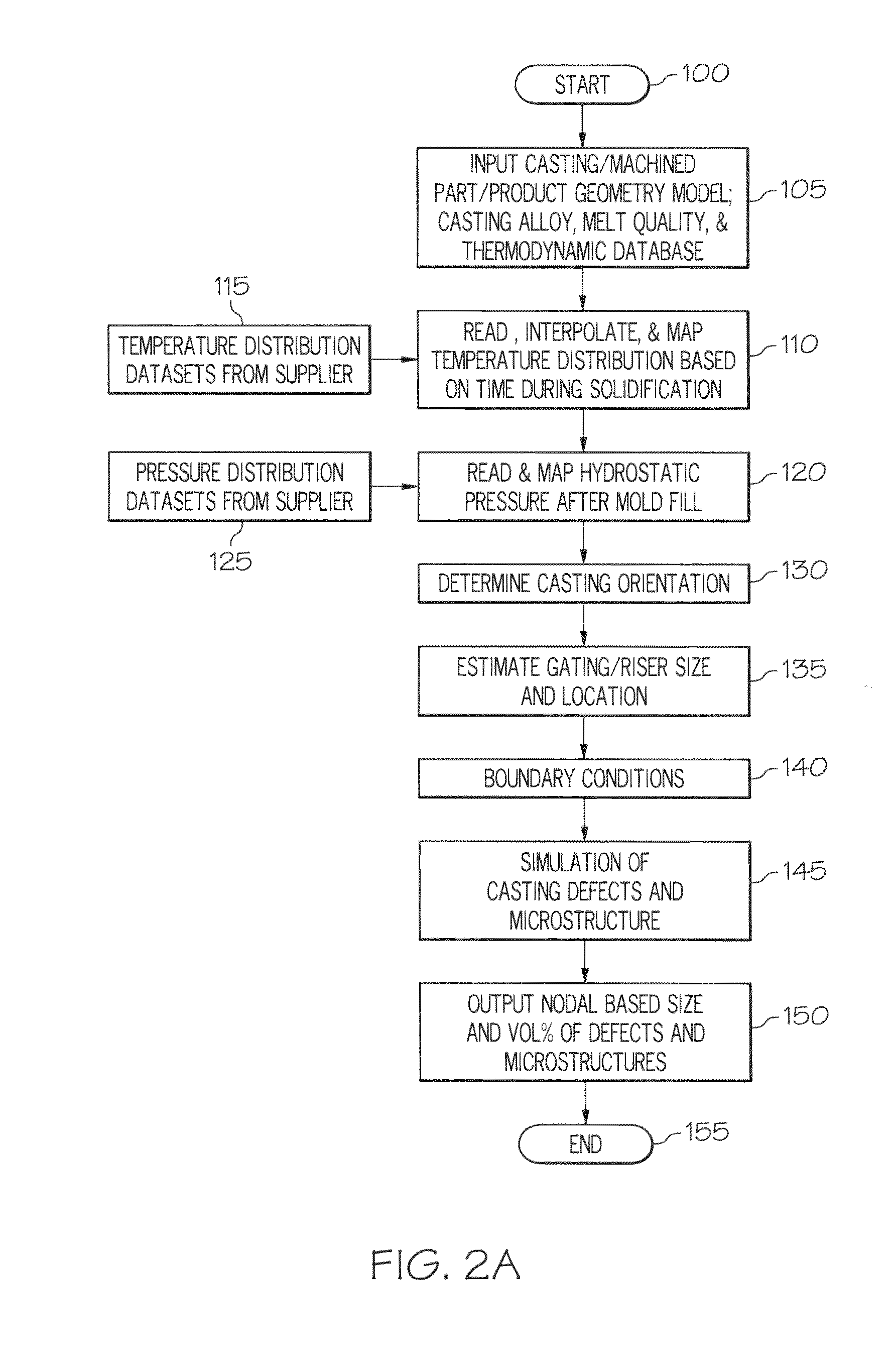Method for simulating casting defects and microstructures of castings
a technology of microstructure and casting, applied in adaptive control, process and machine control, instruments, etc., can solve the problems of proprietary and not readily available other parts of foundries, and achieve the effect of accurate durability analysis
- Summary
- Abstract
- Description
- Claims
- Application Information
AI Technical Summary
Benefits of technology
Problems solved by technology
Method used
Image
Examples
example 1
[0071]Verification of Microstructure and Microporosity Models
[0072]Experimental plate castings were made to test the accuracy of the integrated pore growth and interdendritic flow model under two sets of casting conditions. The plates were 5 cm thick×14.0 cm wide×26 cm tall. The castings were gravity poured with a conventional sprue / pouring basin and were side gated into the cavity. A sand mold was used with a copper chill at the bottom to promote directional solidification over a wide range of cooling rates.
[0073]FIG. 6 is a contour plot showing maximum pore sizes on the centerline cross section of the chill plate predicted by the integrated pore growth and interdendritic flow model: H2 content=0.3 cc / 100 g.
[0074]Table I shows the materials properties for A356 aluminum used in the computer simulation. A comparison of solidification time (liquids to solidus) between experimental measurements and a computer simulation is shown in FIG. 7(a). Following implementation of time-dependent ...
example 2
[0076]The developed simulation methodology described above has been applied to an engine block. The engine block was simulated together with the gating / riser system. FIG. 10 shows the simulated microporosity distribution in terms of volume fraction (vol %) in a cross-section of the engine block. By taking the gating / riser out and applying normal boundary condition (using the prior art method), the predicted microporosity in many locations of the engine block tends to be higher than what it is supposed to be, as shown in FIG. 11. As FIG. 12 shows, the predicted microporosity in the engine block without gating / risers using the method described above is very similar to the simulation results of the engine block with gating / risers (as in FIG. 10).
[0077]FIGS. 13 and 14 show direct comparison of 10,000 data points taken from the simulated engine block mentioned above. FIG. 13 compares the secondary dendrite arm spacing (SDAS) predicted for the engine block with or without gating / riser sys...
PUM
| Property | Measurement | Unit |
|---|---|---|
| microstructures | aaaaa | aaaaa |
| temperature distribution | aaaaa | aaaaa |
| hydrostatic pressure distribution | aaaaa | aaaaa |
Abstract
Description
Claims
Application Information
 Login to View More
Login to View More - R&D
- Intellectual Property
- Life Sciences
- Materials
- Tech Scout
- Unparalleled Data Quality
- Higher Quality Content
- 60% Fewer Hallucinations
Browse by: Latest US Patents, China's latest patents, Technical Efficacy Thesaurus, Application Domain, Technology Topic, Popular Technical Reports.
© 2025 PatSnap. All rights reserved.Legal|Privacy policy|Modern Slavery Act Transparency Statement|Sitemap|About US| Contact US: help@patsnap.com



